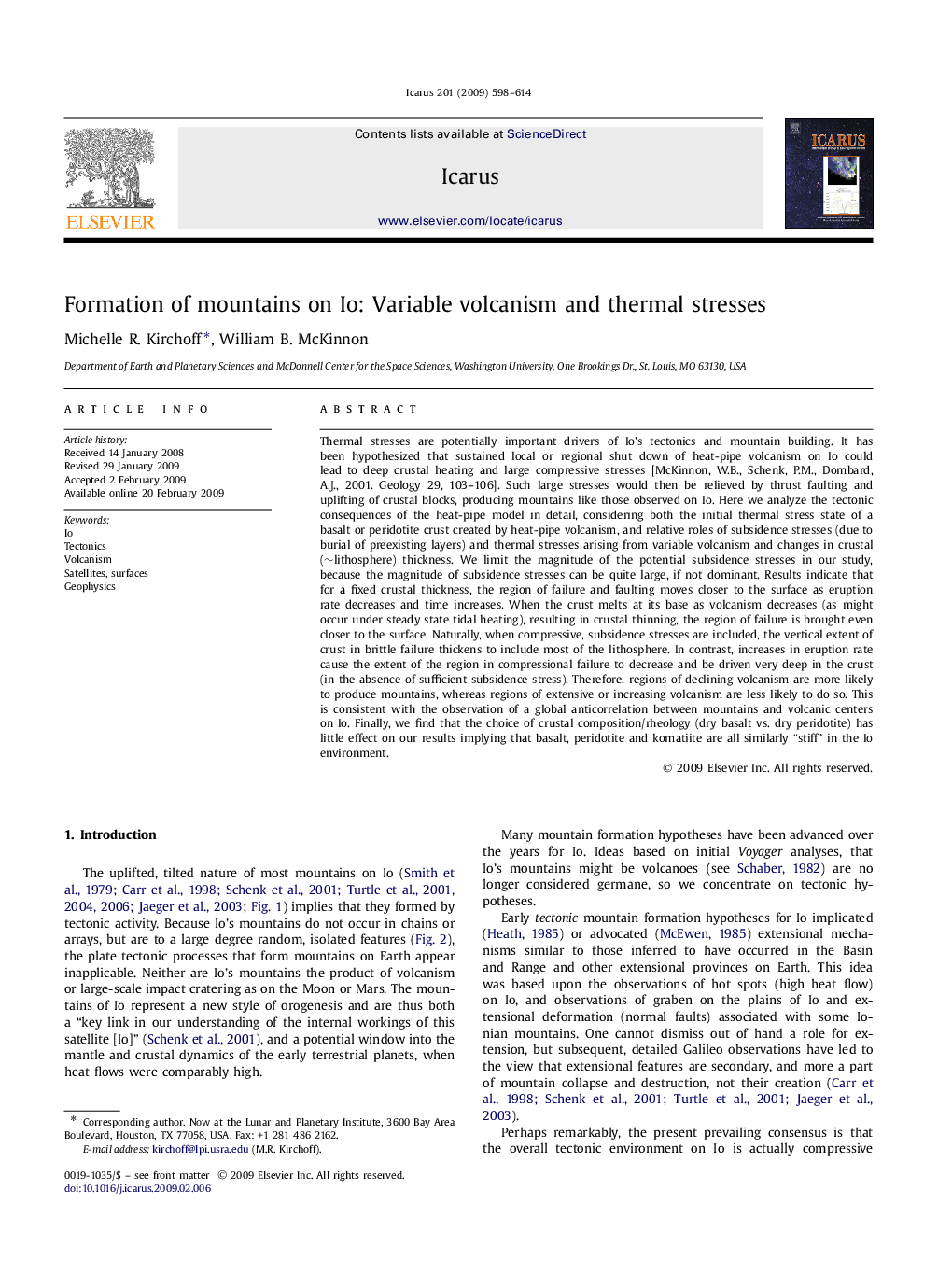| Article ID | Journal | Published Year | Pages | File Type |
|---|---|---|---|---|
| 1774116 | Icarus | 2009 | 17 Pages |
Thermal stresses are potentially important drivers of Io's tectonics and mountain building. It has been hypothesized that sustained local or regional shut down of heat-pipe volcanism on Io could lead to deep crustal heating and large compressive stresses [McKinnon, W.B., Schenk, P.M., Dombard, A.J., 2001. Geology 29, 103–106]. Such large stresses would then be relieved by thrust faulting and uplifting of crustal blocks, producing mountains like those observed on Io. Here we analyze the tectonic consequences of the heat-pipe model in detail, considering both the initial thermal stress state of a basalt or peridotite crust created by heat-pipe volcanism, and relative roles of subsidence stresses (due to burial of preexisting layers) and thermal stresses arising from variable volcanism and changes in crustal (∼lithosphere) thickness. We limit the magnitude of the potential subsidence stresses in our study, because the magnitude of subsidence stresses can be quite large, if not dominant. Results indicate that for a fixed crustal thickness, the region of failure and faulting moves closer to the surface as eruption rate decreases and time increases. When the crust melts at its base as volcanism decreases (as might occur under steady state tidal heating), resulting in crustal thinning, the region of failure is brought even closer to the surface. Naturally, when compressive, subsidence stresses are included, the vertical extent of crust in brittle failure thickens to include most of the lithosphere. In contrast, increases in eruption rate cause the extent of the region in compressional failure to decrease and be driven very deep in the crust (in the absence of sufficient subsidence stress). Therefore, regions of declining volcanism are more likely to produce mountains, whereas regions of extensive or increasing volcanism are less likely to do so. This is consistent with the observation of a global anticorrelation between mountains and volcanic centers on Io. Finally, we find that the choice of crustal composition/rheology (dry basalt vs. dry peridotite) has little effect on our results implying that basalt, peridotite and komatiite are all similarly “stiff” in the Io environment.
